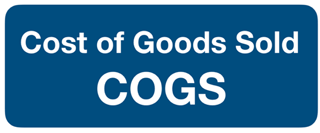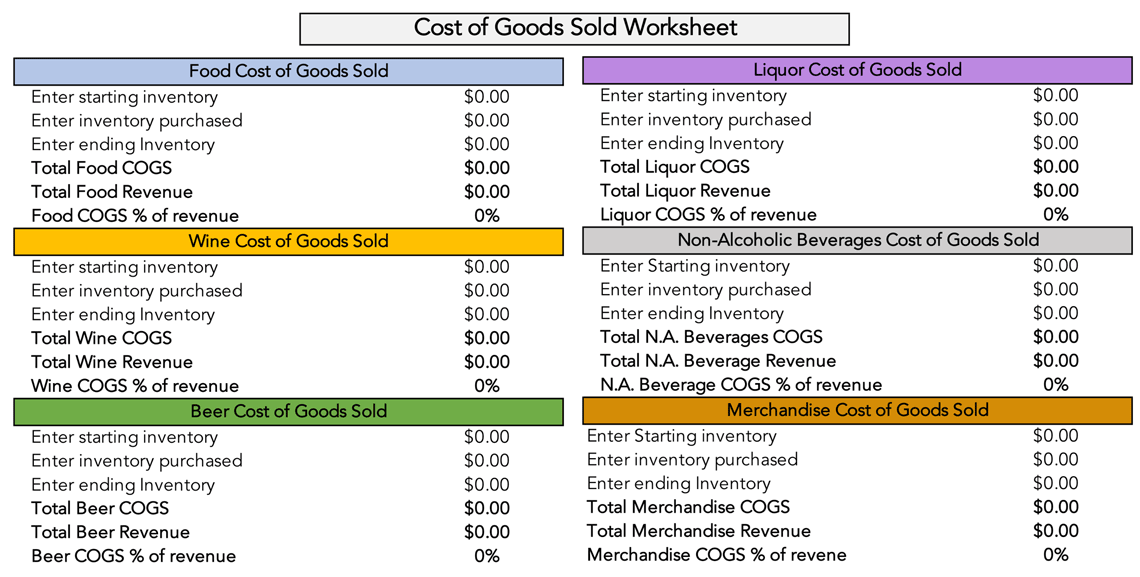
Vol. XIX, No. 7, August 2019
- Editor's corner
- Attention spans are shortening; trends don't last as long
- The evolution of the FEC industry - over expansion and opportunity
- Big investment in immersive mixed-use entertainment by Kevin Williams
- The cannibals are eating the CLV industry
- Essentials of hayride safety
- Is the obsession with beer justified?
- Review of Bar K - a multispecies social eatertainment venue by Linda Beckring
- The importance of great restaurant ambiance
- Do you know your cost of goods sold percentage?
- Jim Kessler gives it to us straight
- Cathedral-tainment
- Home is the new hangout
- Out-of-home entertainment & arts spending by occupation
- Randy's travel tips
Do you know your cost of goods sold percentage?
Cost of goods sold (COGS) percentage is one of the most important financial performance metrics for both foodservice as well as for redemption gamerooms. Without constantly calculating and monitoring the COGS and its percentage, it is impossible to determine the profitability of different items and if you are making a profit. Constant monitoring of COGS percentages allows you to catch problems before they multiply into significant lost profits.

For a foodservice operation, COGS is the cost of all food and beverages used during the period of time. Typically, COGS is calculated on a weekly basis.
COGS is calculated using this formula:
(Beginning Inventory + Purchases) - Ending Inventory = COGS
The beginning inventory means the amount of food and beverage in the kitchen and storage rooms at the beginning of a period, usually the beginning of the week. For instance, on Monday there is $6,000 worth of food and beverages on hand, then $6,000 is the beginning inventory.
Purchases means the amount of food and beverages purchased and delivered that week. If deliveries of $4,000 worth of food and beverages arrived during that week, that would be the purchases.
Ending inventory is the amount of food and beverage product left when the week is over. Although product was purchased and delivered during the week, there will be less inventory at the end of the week since food and beverage was sold or discarded during that week. So, if on the following Monday inventory is taken and $4,000 worth of inventory remains, that is the ending inventory (It is also the beginning inventory for the next week).
In the above, the restaurant had $6,000 worth of inventory on hand on Monday, and then purchased another $4,000 of food and beverage product that week, for a total of $10,000 worth of inventory. The following Monday morning, there was $4,000 worth of inventory remaining. This means that $6,000 worth of inventory was used, the COGS for that week.
($6,000 + $4,000) = $10,000 - $4,000 = $6,000 COGS
Rather than compute COGS for all food and beverage together, it is important for profit management to calculate COGS for different categories of F&B. Food and different beverages will have different target COGS, so that is why it is important to calculate them individually. Typically, it is calculated separately for food, beer, wine, liquor, non-alcoholic beverages and merchandise sales. That is important to do so the target COGS percentages for each can be monitored.
COGS percentages are determined by taking the COGS and dividing it by the revenue. For example, if the COGS for beer that week was $1,000 and $4,000 of beer was sold that week, the COGS percentage for beer would be 25%.
COGS divided by Revenues = COGS Percentage
If any COGS percentage is too high, then an investigation can be made to determine and correct the problem, which could include things such as incorrect portion control, product price increases, excessive waste, even theft.
For gamerooms, COGS is the cost of redemption prizes redeemed during the time period and the COGS percentage is the COGS divided by game revenue, either all games or just the redemption games. It is also referred to as “ticket payout percentage.” To keep a gameroom maximizing play and revenues, the ticket payout percentage differs for different types of games, so needs to be tracked and fine-tuned for each type. For example, “quick play games” require a higher ticket payout (higher COGS) whereas “alley games” should have a much lower payout. You can read a good article by Frank 'the Crank' Seninsky that explains how to calculate ticket payout percentages for gamerooms and how to fine-tune for different types of games by clicking here.
Below is a worksheet template for all these calculations. By clicking here, you can access the Excel worksheet with all the formulas built in.

Vol. XIX, No. 7, August 2019
- Editor's corner
- Attention spans are shortening; trends don't last as long
- The evolution of the FEC industry - over expansion and opportunity
- Big investment in immersive mixed-use entertainment by Kevin Williams
- The cannibals are eating the CLV industry
- Essentials of hayride safety
- Is the obsession with beer justified?
- Review of Bar K - a multispecies social eatertainment venue by Linda Beckring
- The importance of great restaurant ambiance
- Do you know your cost of goods sold percentage?
- Jim Kessler gives it to us straight
- Cathedral-tainment
- Home is the new hangout
- Out-of-home entertainment & arts spending by occupation
- Randy's travel tips


